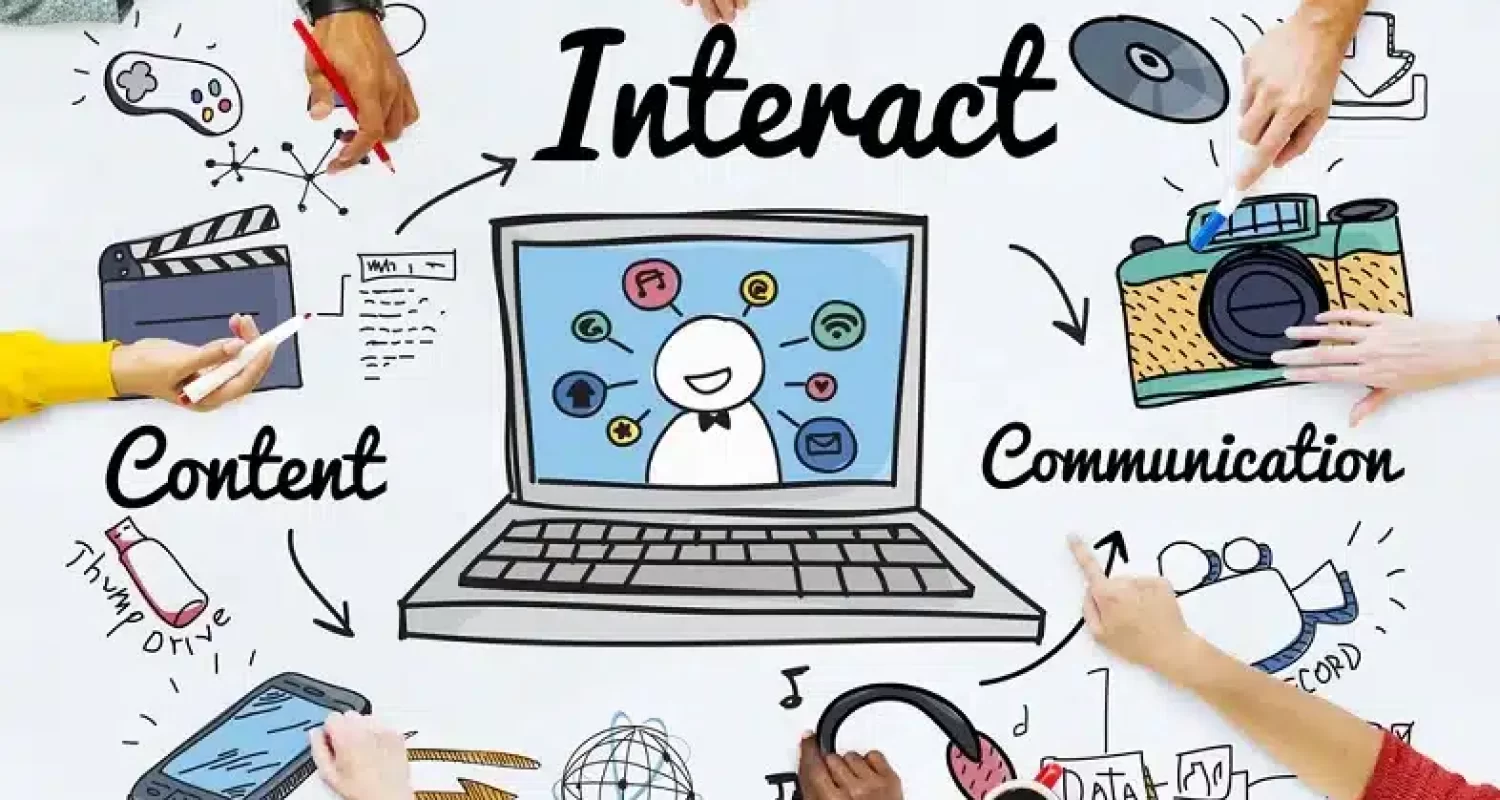
Introduction to Interactive Content Marketing
Interactive content marketing has emerged as a game-changing strategy in today’s digital world, offering brands a way to build stronger, more engaging relationships with their audiences. By allowing users to actively participate in the content, rather than passively consuming it, interactive content enhances engagement, fosters personal connections, and drives meaningful brand interactions. Whether it’s through quizzes and polls, gamification, or user-generated content, interactive content can captivate audiences, generate valuable insights, and ultimately lead to higher conversion rates. This guide explores the various types of interactive content marketing, audience engagement strategies, and tips to elevate your content marketing to a new level.
Why Interactive Content Boosts Audience Engagement
Interactive content stands out because it transforms users from passive viewers into active participants. Traditional content like blogs, videos, and articles is essential, but when users can engage directly, they’re more likely to retain the information and create a memorable experience with the brand.
Here’s how interactive content can help increase engagement:
- Enhancing User Experience: Interactive content creates an immersive experience, giving users a sense of control and satisfaction.
- Driving Deeper Connections: Engaging with content makes audiences feel more connected to the brand, increasing loyalty.
- Providing Immediate Feedback: Real-time responses, such as quiz results, provide instant gratification and drive user satisfaction.
By using interactive content effectively, brands can cater to audience preferences, maintain their interest, and strengthen brand affinity.
Types of Interactive Content
There are various types of interactive content that can enhance user engagement. Here are some popular formats:
- Quizzes and Polls: Quizzes offer a fun, personalized experience for users, helping them learn more about themselves while engaging with the brand. Polls are great for gathering feedback, gauging opinions, or learning about audience preferences.
- Interactive Infographics: Infographics have long been effective in sharing information, but adding interactivity can take them a step further. Interactive infographics allow users to click, scroll, or hover over elements to access additional information or visuals.
- User-Generated Content (UGC): By encouraging audiences to share their experiences with a product or service, brands can foster a sense of community and increase trust.
- Gamification: Incorporating game elements, like challenges or points systems, can create a sense of excitement, motivating users to engage longer with the content.
- Calculators and Tools: Interactive calculators or budget tools can be highly effective for educational content, allowing users to input data and receive custom results.
Each type serves different objectives, from driving traffic to generating leads, so it’s essential to select the right format based on your marketing goals.
Audience Engagement Strategies with Interactive Content
Effective interactive content requires a clear engagement strategy that resonates with your audience. Here are a few key strategies:
- Leverage Personalization: Today’s audiences expect personalized experiences. Use data-driven insights to create content that aligns with individual interests, location, or behavior.
- Incorporate Storytelling through Interactivity: People are more likely to engage with content that tells a story, especially when they can actively participate in it. Interactive storytelling can immerse users, making them feel part of the narrative.
- Create Feedback Loops: Collect user feedback through polls, surveys, or comment sections and incorporate it into your content strategy. By doing so, users feel heard and valued, which enhances loyalty.
- Encourage Social Media Interaction: Social media platforms provide an ideal space for interactive content. Create challenges, ask questions, or post interactive stories to encourage user participation.
Each of these strategies encourages users to engage more deeply, resulting in higher brand visibility and loyalty.
Using Quizzes and Polls for Audience Engagement
Quizzes and polls are among the most effective types of interactive content for audience engagement. They’re easy to share, fun to complete, and provide valuable insights for brands. Quizzes, for example, can range from personality tests to knowledge assessments related to the brand’s products or industry. Polls, on the other hand, allow brands to directly engage with their audience and gather quick insights.
Examples of Quiz and Poll Ideas:
- Quizzes: “What Type of Shopper Are You?” or “Which Product is Best Suited for You?”
- Polls: “What’s Your Favorite Product Feature?” or “Which of Our Products Do You Use Most?”
By creating quizzes and polls that align with the audience’s interests, brands can generate engagement, gather data, and guide potential customers toward products or services that best meet their needs.

Interactive Infographics: Visual Engagement and Information
Infographics have always been a great way to present data in an easy-to-understand format, but interactive infographics take engagement to the next level. By incorporating clickable elements, animations, or videos within an infographic, brands can encourage users to explore deeper layers of information.
For example, an interactive infographic might allow users to click on a graph to see detailed data or hover over images to learn more. This provides a richer experience, keeping users engaged and helping them retain the information presented.
Interactive infographics can work well for:
- Product walkthroughs
- Complex data visualizations
- Educational content
When users can engage with visuals in an active way, they’re more likely to remember the content and share it with others.
Leveraging Gamification in Marketing
Gamification involves incorporating game-like elements, such as point systems, badges, or challenges, into marketing content to boost engagement. Gamification creates excitement, encouraging users to participate and reach set goals. It also allows for a sense of achievement and progress, which can drive users to keep interacting with the content.
Here are some ideas for gamification in interactive content marketing:
- Challenges: Daily or weekly challenges encourage consistent engagement. For example, a fitness brand might create a “30-Day Fitness Challenge.”
- Reward Systems: Offering points or badges for completing certain actions can enhance engagement and motivate users.
- Contests: Running a contest where users participate to win prizes can be a powerful motivator for interaction.
Gamification not only drives engagement but can also promote a sense of community, as users share their achievements or challenge others.
Engagement Metrics: Measuring Interactive Content Success
To evaluate the effectiveness of interactive content, it’s essential to track engagement metrics. Unlike static content, interactive content provides additional metrics that offer insights into user behavior.
Key engagement metrics for interactive content include:
- Click-Through Rate (CTR): Measures how often users click on elements within the content.
- Completion Rate: The percentage of users who complete a quiz, poll, or other interactive element.
- Time Spent on Page: This metric reveals how long users engage with the content, indicating interest.
- Shares and Comments: High shares or comments can indicate content that resonates well with the audience.
By analyzing these metrics, brands can refine their interactive content strategies and optimize for better engagement and conversions.
Creating Personalized Content Experiences
Personalization in interactive content marketing allows brands to deliver experiences tailored to individual users. From product recommendations to personalized quizzes, this approach can deepen the connection between the brand and the user, leading to increased loyalty.
Some examples of personalized interactive content:
- Tailored Quizzes: Quizzes that use data from past interactions to suggest personalized recommendations.
- Interactive Guides: Content that adjusts based on user choices, leading to a custom experience for each individual.
- Customized Infographics or Calculators: Providing data or results based on inputs unique to the user.
Personalized interactive content helps brands show that they understand their customers’ unique needs, creating a stronger bond and a more loyal customer base.
Lead Generation with Interactive Content
Interactive content can also serve as an effective lead generation tool. By offering value in the form of engaging quizzes, calculators, or gated content, brands can encourage users to provide their contact information in exchange for the experience.
Effective lead generation tactics with interactive content include:
- Gated Quizzes or Tools: Requiring users to enter an email before receiving results.
- Content Upgrades: Offering exclusive access to more detailed content, like eBooks or reports, in exchange for sign-up.
- Polls and Surveys: Gathering contact information after users complete an engagement-driven survey.
This approach can significantly increase lead generation while providing potential customers with valuable content that aligns with their interests.
Conclusion: Elevating Your Brand with Interactive Content Marketing
Interactive content marketing provides brands with an innovative way to engage audiences, drive valuable insights, and build meaningful relationships with users. By creating content that encourages participation—whether through quizzes, infographics, user-generated content, or gamification—brands can set themselves apart in an increasingly competitive digital landscape. With clear strategies, personalization, and engagement metrics, interactive content can become a powerful tool in any marketer’s toolkit, leading to higher engagement, deeper customer connections, and greater brand loyalty.
Consider incorporating interactive elements into your marketing strategy and watch your engagement rates soar as your audience becomes more invested in the experiences your brand offers.







